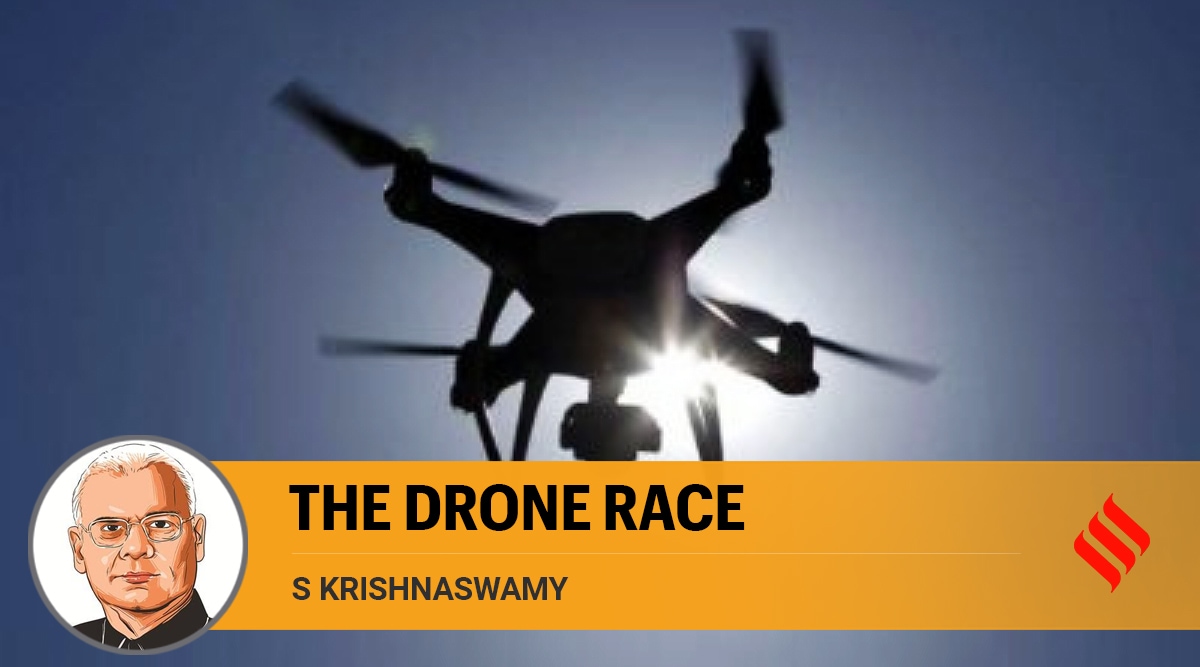India needs drone detection systems
[ad_1]
On the night of June 26-27, a drone reportedly dropped two explosive devices on Jammu airfield. One exploded near the helicopter parking lot and the other exploded five minutes later near air traffic control. Some passers-by were injured, but no other significant damage was caused. The potential, however, was lethal. It caused fear and confusion as to what to protect and how. Invariably, innocent people are injured by such attacks. Is this the new terrorist weapon?
This daring attempt caused a stir in defense and security establishments. There have been reports of alleged LeT involvement that could point to a possible Pakistani hand. Previously, there were numerous reports of Pakistani drones dropping ammunition, rifles and other essentials to support terrorist activities. Attacking inside an Air Force base with drones is certainly an escalation – in terms of targeting Indian military assets, the ability to achieve moderate accuracy, and the ability to launch offensive missions at using drones.
Pakistan has evolved by denying the involvement of its military establishment in drone-based operations against India. This act may well be Pakistan’s attempt to disrupt the political process aimed at bringing stability and peace to the region. India cannot afford to ignore the incident just because there were no casualties. It will not be easy to find the point or place from which these were launched. As we have seen in recent clips from Gaza, rockets are launched from trucks and jeeps; they throw and spin. Similar would be the principle of using drone attacks.
There is a need to intensify 24/7 observation to track likely locations from which drones are launched. These places, one day, must become the target of our soldiers. These drones may have been of Chinese origin. They could also be from Turkey as they have developed capable drones / drones. India must find a way to fight back and not let them go easily every time.
A few years ago, India and Pakistan were at intense war with UAVs (Unmanned Aerial Vehicles). Periodically we would pick up drones crashing on our side. Pakistan also picked up a strange one from India, maybe just one or two. I remember very well that one of our drones was intercepted. After a few minutes of “combat”, the drone was shot down. Now is the time of drones. Drones have now become much more powerful with extended capabilities. India is certainly lagging behind in drone and drone technology, although we keep hearing that DRDO has come up with a new design etc. They must seriously work on the operationalization of their range of drones and drones.
For almost a decade, the Indian military, security forces and DRDO have been working on drone / drone technology and ways to engage drones. In the meantime, drone technology itself has improved dramatically and costs have come down. We are now exploring pizza delivery by drone as well as parcel delivery. There has been a significant improvement in payload capacity, endurance and range. Availability has been relaxed. Nowadays, you can buy drones by mail order. Around the world, equipment and methods are being developed to combat drones, and laws and regulations relating to the possession and theft of drones, including for commercial purposes, are relaxed.
You can build drones easily from kits or even from Google. To simplify, the drone is generally a “Quad-Copter” equipped with four propellers mounted vertically. These can hover and are very manoeuvrable. Drones, on the other hand, typically have the structure of an airplane with wings and a fuselage. They don’t get high. In addition, drones are difficult to detect. They are made of composite plastic and fabric and are not easily detected by radar. In addition, they fly ultra-low, below 100 feet. These can be used for reconnaissance, observation, as well as for transporting small payloads, including mail and packages. Drones can be preprogrammed to reach a target area to fly over or deliver or be flown by a remote pilot. Winds and weather affect drone flight. The typical payload is between 1 and 25 kg, which could be used by Pakistan to support LeT / Jaish and other such items. A few pounds of RDX can cause serious damage. We are aware that special light ammunition is under development for use by helicopter / UAV / drone operations which may have penetrating capabilities. Such ammunition would be more expensive than the cost of drones. Pakistan would certainly choose cheaper options since harassment would be their main objective. The country is climbing the ladder to improve accuracy, payload and destruction capability. It would pay off for Pakistan to launch dozens if not hundreds of drones across the border to harass or even cause serious damage by dropping IEDs or crashing into a “target†loaded with an IED.
Unfortunately, India’s own abilities to detect drones / UAVs have not yet developed successfully. We have not seriously considered procuring detection systems and weapons against drones. Rushing after an attack won’t help us. The government must review the state of progress of drones, the means of detection and the methods of engagement.
They should form a working group to propose actions within a specific timeframe to counter drones. Helicopter actions could be initiated to explore the options. We are aware of the use of helicopters to detect and engage UAVs. Experiments are underway to follow, using optical or infrared means or multi-sensors including sound. Efforts must be accelerated to ensure detection, although detection alone may not be sufficient. We also need to find ways to involve them.
This column first appeared in the paper edition on June 29, 2021 under the title “The drone raceâ€. The author is the former Chief of the Air Staff
[ad_2]

